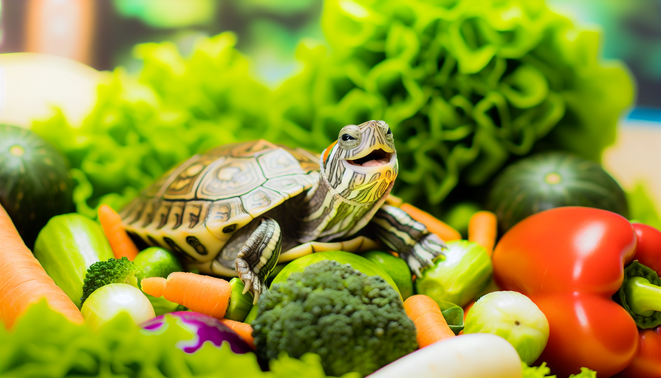“`html
Introduction to Pet Turtle Nutrition
Understanding proper nutrition is fundamental for the health and longevity of pet turtles. Different turtle species have unique dietary needs, and pet owners must take these into account to keep their pets thriving. In general, a balanced diet influences growth, boosts the immune system, and promotes overall well-being.
Understanding the Dietary Needs of Turtles
Turtles have varying feeding requirements based on their species and age. For instance, hatchlings and juvenile turtles often require more frequent meals—typically two to three times a day—focusing primarily on a protein-rich diet, which includes insects, worms, and high-quality commercial turtle pellets. In contrast, adult turtles can generally be fed every other day and should shift towards a diet rich in greens, vegetables, and fruits relevant to their specific species. It is essential for pet owners to understand these needs for optimal care. For a deeper understanding of different turtle species and their requirements, refer to our article on Turtles vs. Tortoises.
Essential Foods for Pet Turtles
To maintain a healthy diet for your turtle, include a variety of foods such as leafy greens, protein sources like insects or specially formulated turtle pellets, and occasional fruits. Each ingredient is vital for a well-rounded nutritional profile. For instance, herbivorous turtles benefit from leafy greens such as kale and collard greens, while omnivorous species can enjoy a mix of plant matter and protein. Studies show proper nutrition not only supports physical health but enhances the longevity and happiness of turtles. More on pet care products can be found in our article about selecting the best pet supplies.
How to Create a Balanced Meal Plan
Developing a balanced meal plan is crucial for your turtle’s nutrition. Combine various food sources to ensure that all nutritional aspects are covered. Start by ensuring that the meal reflects the turtle’s diet type—herbivorous or omnivorous. Incorporate a mix of vegetables, protein sources, and occasional fruits. Adjust portions based on the turtle’s size and age, ensuring that food pieces are small enough to prevent choking during feeding. This variety not only meets their dietary needs but also stimulates natural foraging behaviors, enhancing their life quality.
Feeding Techniques and Best Practices
To make feeding time enjoyable for your turtles, establish a consistent feeding schedule. This predictability helps turtles anticipate mealtime and reduces stress levels. Additionally, create an engaging environment with basking areas and hiding places, encouraging natural foraging behaviors during mealtime. Always observe your turtle’s reaction to different foods and adjust the diet based on their preferences and health. Effective feeding techniques create an enriching experience for both the turtle and the owner.
Common Feeding Mistakes to Avoid
Feeding turtles can come with some common pitfalls that owners should avoid. One significant mistake is not tailoring the diet to the specific species and age of the turtle; for instance, juvenile turtles need more protein than adults. Additionally, many owners overlook the importance of dietary variety, leading to nutritional deficiencies. Ensure that food is appropriately sized to prevent choking and consider avoiding excessive treats to maintain a balanced diet. Learning about these mistakes can significantly improve your pet’s health and well-being.
Monitoring Your Turtle’s Health through Diet
Your turtle’s diet directly correlates with its health. Regularly monitor their eating habits, weight, and behavior to identify any potential health issues. A balanced diet is essential, so make adjustments as your turtle grows or if you notice changes in its activity level or appetite. Health monitoring goes hand-in-hand with a proper diet; maintaining awareness allows you to make informed dietary decisions tailored to your turtle’s current needs.
Conclusion
In conclusion, understanding and meeting the dietary needs of pet turtles is crucial for their overall health and happiness. By providing a balanced diet tailored to their species and age, you can enhance their quality of life. Regularly monitoring their health and making appropriate dietary adjustments will ensure they thrive. If you’d like to delve deeper into the aspects of pet care, explore our other informative articles.
Sources
- Pets & Plants – How to Select the Ideal Cat Tower for Your Feline Companion
- Pets & Plants – Turtles vs. Tortoises: Which One is the Right Pet for You?
- Pets & Plants – Volunteering Insights: Making a Difference in Dog Adoption
“`

1 thought on “The Ultimate Guide To Feeding Your Pet Turtle: Nutrition Tips For A Happy, Healthy Shellmate”